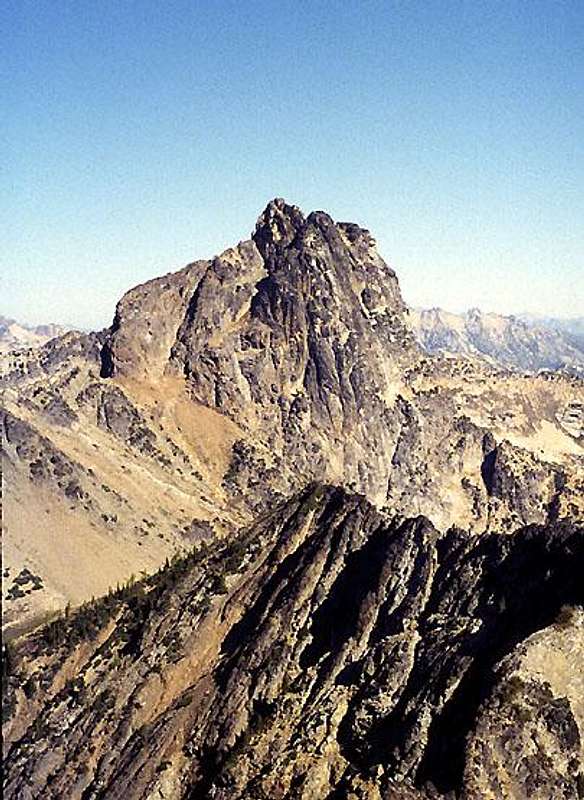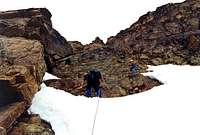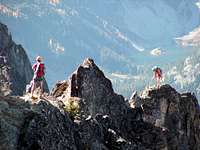-
 16369 Hits
16369 Hits
-
 72.08% Score
72.08% Score
-
 2 Votes
2 Votes
|
|
Route |
|---|---|
|
|
48.52616°N / 120.70511°W |
|
|
Mountaineering, Trad Climbing |
|
|
Most of a day |
|
|
Class 5 (see Overview) |
|
|
II |
|
|
Overview
The West Ridge was the first ascent route on Cutthroat Peak.
According to Beckey's guide, it should be possible to climb this route using a set of variations with nothing more difficult than Class 4. However, this would involve very good route finding skills along with some luck and most parties will probably end up on at least some Class 5 climbing. Beckey rates the climb as "Grade II; Class 5 (difficulty depends on which variations are used)" Also, many trip reports and other sources rate a lot of what Beckey calls Class 4 as easy Class 5. So, one should certainly not count on finding a Class 4 route to the top.
Kenneth Adam, Raffi Bedayn, and W. Kenneth Davis made the first ascent of Cutthroat Peak 22 July 1937 via the West Ridge.
Approach
The route is easily accessed from the North Cascades Highway. There is a broad shoulder with adequate parking located about one half mile west of the Blue Lake Trailhead on the west side of the pass. There is a climber's trail starting from the west side of a group of trees near the eastern end of the main pull off where most people park. It is usually marked with cairns and may take a little searching to find. The trail leads into the basin south of the peak.
Route Description
There are three possible starts for the route:1) From the very base of the ridge. This start involves much Class 5 climbing including a pitch which Beckey describes as intimidating with "no worthwhile protection for 80 ft (it would be more than serious to fall)"
2) The Southwest Gully. This is the easiest, safest, and most popular start. It is the shortest and most westerly of the gullies leading to the ridge crest from the south. It involves two Class 3 and 4 pitches to the ridge crest.
3) The Second Southwest Gully. This is a long narrow Class 4 gully with loose down sloping rock and significant rock fall danger. It reaches the ridge crest just below the summit block.
Once on the ridge above the Southwest Gully, the climbing is very pleasant Class 3 and 4 scrambling along a narrow crest with ample places for running belays.
At the base of the summit block, there are two major variations for completing the climb.
1) The Northwest Ledge. This is the easiest of the two finishes and follows a prominent ledge across the upper part of the northwest face to the north ridge and finishes on the north ridge route - one class 4 pitch to the summit from where the ledge joins the north ridge. (Another source calls this last pitch about 5.3.)
2) The southwest side of the summit block. This is a more direct and more difficult finish - minimum 5.5. Traverse about a 20 feet from the base of the summit block to the climber's right to a detached block. Scramble up behind the block or climb past on the outside (5.7). Above the block an exposed traverse of about 20 feet ends at the base of a short chimney (about 15 feet, 5.5). Easier climbing from the top of the chimney up a gully to the right leads to a short slab and to the summit.















